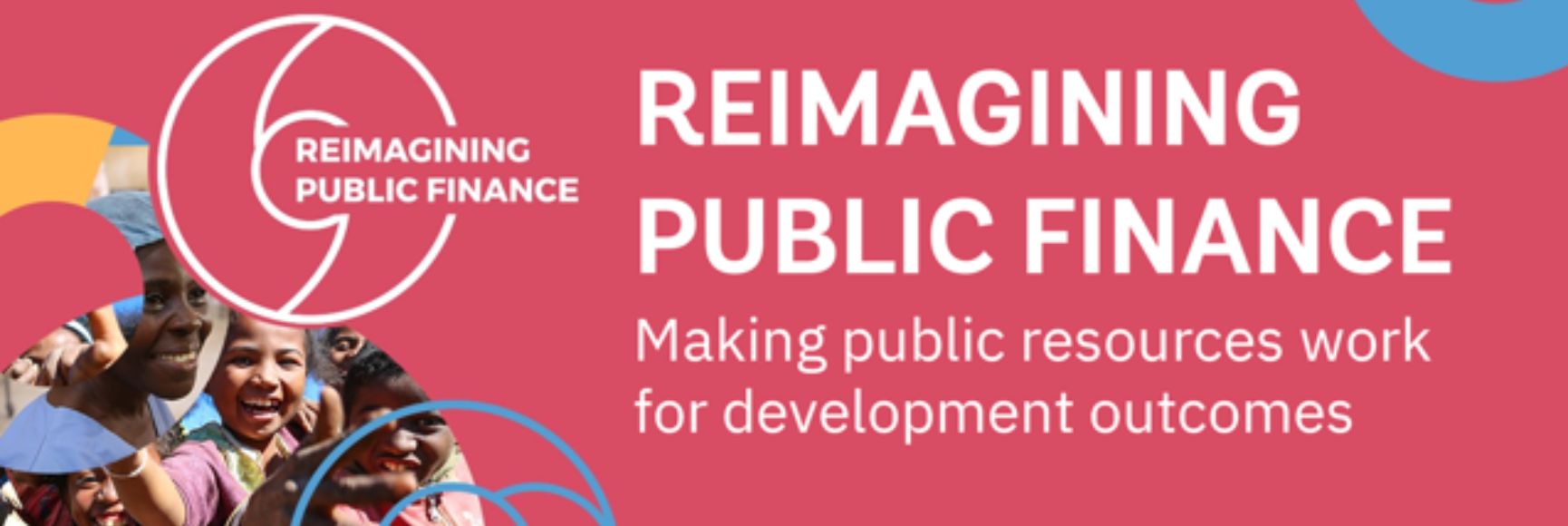Posted by Rachel F. Wang
Many of the key players committed to promoting greaterfiscal transparency met on Tuesday for one of the first events of the 2013IMF-World Bank Annual Meetings.
The Joint IMF-World Bank Seminar entitled “StrengtheningFiscal Transparency and Government Accounting” brought together representativesfrom international organizations, national governments, think tanks,professional organizations, and civil society to discuss how to promote greaterfiscal openness and improve the information base for fiscal decision-making.
The event was kicked off with a welcome address fromBertrand Badré, Managing Director and World Bank Group Chief Financial Officer,and included two panel discussions on
- Strengthening fiscal transparency standardsand practices chaired by Richard Hughes, Division Chief in the IMF’s FiscalAffairs Department), and
- Improving government accounting chairedby Chuck McDonough, Vice President and Controller at the World Bank).
Panelists included Moritz Kramer from Standard & Poor’s,Phil Sinnett from the PEFA Secretariat, Vivek Ramkumar from the InternationalBudget Partnership, Jo Marie Griesgraber from New Rules for Global FinanceCoalition, Devantri Kaur Santa Sigh from the Malaysian Ministry of Finance,Gerhard Steger from the Austrian Ministry of Finance, Fayez Choudhury fromIFAC, and Ron Salole from IPSAS board.
Discussions ranged over a variety of areas, including therevision of the IMF’s fiscal transparency code and new fiscal transparencyassessment; how fiscal transparency feeds into credit ratings and vice versa;the harmonization of different transparency-related norms and standards; therole that civil society has played in promoting greater fiscal openness bygovernments; and the opportunities and challenges in moving from cash toaccrual accounting.
The keynote address, given by Gerd Schwartz, Deputy Directorof the IMF Fiscal Affairs Department set the tone for the morning’sdiscussion. The text of his speech is provided below:
I would like to use this opportunity to talk about the importance offiscal transparency for fiscal sustainability and discuss the work underway toimprove both standards and practices. More specifically, there are four issues I would like to cover:
- First, Iwould like to highlight the progress made in promoting greater fiscaltransparency over the past decade, thanks to collective efforts of many of theorganizations represented in this room.
- Second, Iwould like to discuss some of the lessons of the economic crisis regarding theadequacy of existing fiscal transparency standards and practices.
- Third, I would like to provide you with an update ofthe IMF’s ongoing work on strengthening its evaluation tools in the fiscaltransparency area; and
- Finally, Iwould like to review the broader agenda on fiscal transparency and governmentfinancial disclosure.
Progress to Date
First, let’s look at progress to date. The main message here that therehave seen tremendous advances on fiscal transparency although progress has beenat time been slow. Different tools havehelped us to bring about progress. To name some key ones:
- Statisticalstandards regarding government reporting, particularly Europe’s ESA95 andthe IMF’s Government Finance Statistics Manual (GFSM 2001);
- Accountingstandards, particularly IFAC’s International Public Sector AccountingStandards (IPSAS);
- the OpenBudget Index of the International Budget Partnership;
- themultilateral Public Expenditure and Financial Accountability (or PEFA)framework;
- theExtractive Industries Transparency Initiative Principles and Requirements toincrease transparency around natural resources;
- and theIMF’s Fiscal Transparency Code and accompanying Transparency Manual.
Together, these various tools have helped to bring about realimprovements in fiscal transparency; of course helped also by advances in ITsystems and platforms. Two examples:
- Until theearly 1990s, most countries’ fiscal data covered only the central governmentbudget. Now, over 40 percent report fiscal statistics for the whole of thegeneral government (that is, both central and sub-national governments).
- A decadeago, the vast majority of countries provided information only about thegovernment’s cash inflows and outflows. Now, over 60 governments provide someaccrual-based information and over 40 publish balance sheets of their financialassets and liabilities.
Lessons of the Economic Crisis
However, the recent economic crisis has reminded us that the fiscaltransparency agenda remains unfinished. Last year the IMF published a policypaper entitled “Fiscal Transparency, Accountability, and Risk” in which wereviewed the state of fiscal transparency in the wake of the economic crisis.We found that, despite significant gains since the late 1990s, the informationabout the state of public finances remains inadequate. Let me give threeexamples:
- First,past fiscal information is often still unreliable. For example, in Greece in2010, reported debt and deficit data turned out to be poor indicators of theunderlying health of the public finances. We have made similar experienceselsewhere. In part this may just be to poor data, and in part this may reflecta tendency to shift spending and borrowing to government-controlled companiesthat are not consolidated in the fiscal accounts.
- Second,budgets and fiscal forecasts often fail to provide good information aboutfuture fiscal developments. Sometimes they aren’t even presented on the samebasis as the data that will be used to judge the government’s performance atthe end of the year. In Europe, in particular, accrual-based statistics forcombined central and local government are used to determine whether EU debt anddeficit targets have been met. But central government budgets usually forecastrevenue and spending on a cash basis. That has hindered both national andregional efforts to monitor country performance against EU-wide fiscal rules.
- Third, fewgovernments publish information on the fiscal risks they face. In countrieswith large banking sectors, like Iceland, Ireland, and the UK, the biggestshock to the public finances came from the realization of large, mainlyimplicit, contingent liabilities to the financial sector—a risk that had notpreviously been discussed, let alone managed or provisioned for, in governmentbudgets and/or fiscal reports.
The economic crisis hasalso highlighted shortcomings in the available array of tools for evaluatinggovernment fiscal transparency practices. At the IMF, in our 2012 paper, we also looked back at the fiscaltransparency assessments we had prepared for some of the countries hit hardestby the crisis. On the plus side, many of the assessments identified some of thegaps or weaknesses in reporting that contributed to problems during the crisis.However, overall, we concluded that the assessments were not as helpful as wehoped in highlighting the size of problems and spurring countries to addressthem. For example, our 2003 Portugal assessment mentioned that fiscal accountsdid not capture the obligations created by public-private partnerships, but,also for lack of data, did not estimate how much greater the government’s debtwould have been if it had included those obligations.
Fiscal Transparency Code and Assessment
At the Fund, weconcluded that addressing these various issues required revisions to both ourexisting fiscal transparency standards and evaluation tools. We have since beenbusy revising both our Fiscal Transparency Code and the way we assess countrypractices against that Code. In July, wereleased a first draft of a new Code for public consultation. The revised Codediffers from the latest, 2007, version in a number of important respects:
- First, thenew Code is focused on the content and quality of published fiscal data, ratherthan clarity of reporting procedures.
- Second,the new Code takes a more comprehensive view of government finances, includingthe production of fiscal data that consolidate the entire public sector (i.e.,also including government-controlled companies), and the production of fullbalance sheets (i.e., including both financial and non-financial assets).
- Third,instead of setting a single standard, the new Code differentiates for each ofits various principles between a basic, good and advanced practice so as toprovide countries with milestones toward full compliance with bestinternational standards.
- Fourth,the new Code places much greater emphasis on fiscal risks analysis and management,which now constitutes one of the three pillars of the new Code.
The feedback we havereceived through two rounds of public consultation has been very supportive ofthe new structure and approach, and we are continuing to fine-tune principlesand practices based on the feedback. The response to the public consultationsalso showed particular interest in transparency arrangements for extractiveindustries, which forms a part of the new code, but will be further elaboratedin the Guide on Resource Revenue Transparency, which we are in the process ofrevising.
We are also overhaulingour approach to assessing country compliance with the New Code. Over the lastsix months we have been piloting a new Fiscal Transparency Evaluation inBolivia, Costa Rica, and Ireland. Thefirst of these evaluation reports, for Ireland, has now been published andcopies are available at the back of the room. If you compare these new FiscalTransparency Evaluations with the IMF’s old transparency assessment, you willnotice a number of changes:
- First,there is a more substantive analysis of the comprehensiveness and quality of acountry’s reported fiscal data and the magnitude of data gaps.
- Second,the reports offer a set of “heat maps” that provide a straightforward summary ofa country’s strengths and weaknesses regarding fiscal transparency.
- Third, thereports include a sequenced, medium-term action plan setting out the concretesteps that a country would need to take to address the key weaknesses.
Initial reactions on thefirst three pilot assessments have been positive, and we have been surprised bythe strong initial demand. As a result, we have already scheduled fiveadditional pilots over the next six months, that is, before we plan to finalizethe New Code and evaluation tool in the spring of 2014.
The Broader Agenda
Let me use the remainingfew minutes to talk about the broader agenda that we all face in strengtheningfiscal transparency. The range oforganizations represented on today’s panels is testament to the breadth ofinterest and depth of commitment to the principle of fiscal transparency. Iwould briefly like to set out what I see as the three key elements of aneffective international partnership on fiscal transparency.
Harmonization of standards
The first element is amore comprehensive, coherent, and consistent set of fiscal transparencystandards. We now have a number ofinternational norms in the fiscal transparency area—the Fiscal TransparencyCode, the PEFA framework, the Open Budget Index, GFSM 2001, and IPSAS—but westill have some work to do on harmonizing our tool kits. For example, differentterms and definitions are used for even basic concepts like expenditure,revenue, liabilities, and even government itself. We are fortunate, however, that moststandards and codes—like the IMF’s Transparency Code and the PEFA framework arecurrently under review. This presents us with a unique opportunity to threethings:
- Establishmore firmly what we take to be the basic information needed for effective fiscalpolicymaking and accountability;
- Define thefrontier of advanced practice, based on the innovations we have seen in theareas of fiscal forecasting, budgeting, accounting, and risk management;
- Align moreclosely the concepts used and stages of development defined by our standards,so as to send clear and consistent messages to countries.
There are limits, ofcourse, to how far we can or should go in harmonizing our respective standardsas they serve different purposes. But bringing our various norms closertogether, including in terminology, will not only provide a more coherent suiteof financial reporting standards for government, but also make it easier forgovernments to adopt and implement those standards simultaneously.
Implementation of standards
Implementation is thekey toward progress. There is little point in investing time and energy inredefining and harmonizing our respective frameworks if they are notimplemented. I am therefore very pleased that we have governmentrepresentatives here today to talk about their experiences withimplementation.
We are very encouragedthat work on implementation is moving ahead fast. An example is the workunderway in Europe to move towards EPSAS – the European Public SectorAccounting Standards. We have already seen the powerful role that Europeaninstitutions can play in improving fiscal transparency through the adoption ofESA95, which delivered a step change in the coverage and consistency ofstatistical reporting among EU Member States. We are sure that the adoption of EPSAS will have similarly beneficialresults for government accounting systems which, after all, are the backbone offiscal statistics, forecasts, and budgets.
At the IMF, we aresupporting the various implementation initiatives by providing practicalsupport to governments, including, for example, by setting out sequences ofpractical steps for moving from cash to accrual accounting.
Continued information campaigns
While implementation iscrucial, we also have to continue our information campaigns, that is workingwith policymakers, legislators, markets, and citizens and emphasize thebenefits of the various tools in bringing about better decision making andaccountability. There is still a lot of work ahead in changing mindsets. Let megive you a few examples:
- Manycountries now own almost as much in financial assets as they owe inliabilities. There is a need to start thinking more in terms of balance sheetsand net worth, and not just in terms of flows, i.e., revenue, expenditure, anddeficits.
- Mostcountries need to understand and manage better the fiscal risks that canaccompany large capital inflows, credit expansion, and rapid economic growth,so that any slowdown or reversal does not result in unsustainable fiscalpositions.
- Countriesthat have recently discovered large natural resource endowments need to use theavailable analytical tools to ensure that they are used sustainably and for thebenefit of current and future generations.
This shift in mindsetswill not happen overnight, but it is for all of us to make the case for why itis needed and to show how it can be achieved.
Conclusion
In conclusion, I believethat a revitalized fiscal transparency effort is essential to address theproblems revealed by the economic crisis, inform government policy responses,and make progress in making fiscal policies more sustainable and crisisresistant in the future.
I am sure you will usetoday’s seminar to discuss how we can work together to build a more coherentglobal architecture of transparency standards and promote their implementationaround the world.
I wish you good luck andlook forward to working with you in the years ahead.
Thank you
Note: The posts on the IMF PFM Blog should not be reported as representing the views of the IMF. The views expressed are those of the authors and do not necessarily represent those of the IMF or IMF policy.




